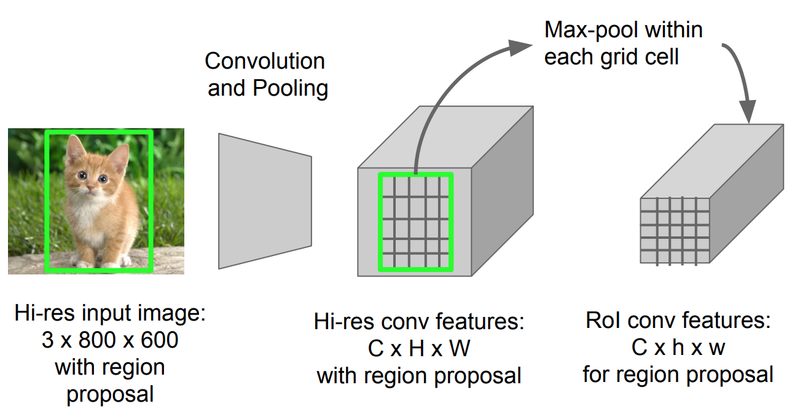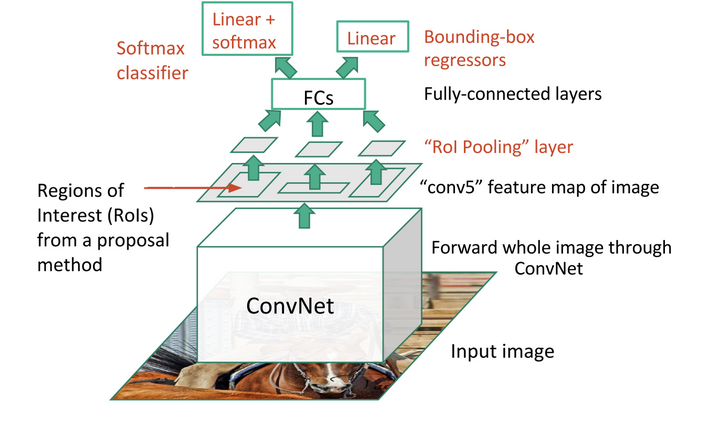Fast R-CNN introduces a Region of Interest (RoI) pooling layer for projecting region proposals onto feature maps in a subsampling manner. The RoI pooling layer allows the model to efficiently extract fixed-size feature maps for each region proposal, regardless of the proposal's size or aspect ratio. Below are the steps for projecting region proposals using subsampling in the Fast R-CNN architecture:
Generate Region Proposals:
Start with the region proposals generated using an external region proposal method or an integrated Region Proposal Network (RPN).
Extract Feature Maps:
Pass the entire image through a Convolutional Neural Network (CNN) to obtain feature maps. These feature maps will be the input for the RoI pooling layer.
Calculate RoI Pooling:
For each region proposal, calculate the RoI pooling operation. This operation divides the region proposal into a fixed grid and pools the features in each grid cell. The pooling is performed to obtain a fixed-size output for each region.
Subsampling:
The RoI pooling layer subsamples the feature maps within each region proposal. This subsampling ensures that the region proposals, regardless of their sizes, are mapped to a fixed-size feature representation. This fixed-size representation is crucial for feeding the proposals into subsequent fully connected layers.
Output Feature Vector:
The output of the RoI pooling layer is a fixed-size feature vector for each region proposal. This feature vector captures relevant information within the proposed region and serves as input for the subsequent fully connected layers in the Fast R-CNN architecture.
Classification and Regression Heads:
The fixed-size feature vector is then fed into two parallel branches:
Classification Head: This head predicts the probability distribution over different classes, determining the likelihood of the region proposal belonging to each class.
Regression Head: This head predicts adjustments (offsets) to the bounding box coordinates, refining the position of the bounding box.
Training:
During training, the model is optimized to minimize both the classification loss and the bounding box regression loss. The combination of these losses guides the model to accurately classify objects and adjust bounding box coordinates for precise localization.
Here's a simplified representation of the process:
[Image] ---> [CNN] ---> [Feature Maps] ---> [RoI Pooling] ---> [Fixed-size Feature Vector] ---> [Classification and Regression Heads]
The RoI pooling operation is a key component that allows Fast R-CNN to efficiently handle region proposals of varying sizes and aspect ratios, providing a consistent input format for subsequent classification and regression tasks.



Top comments (0)